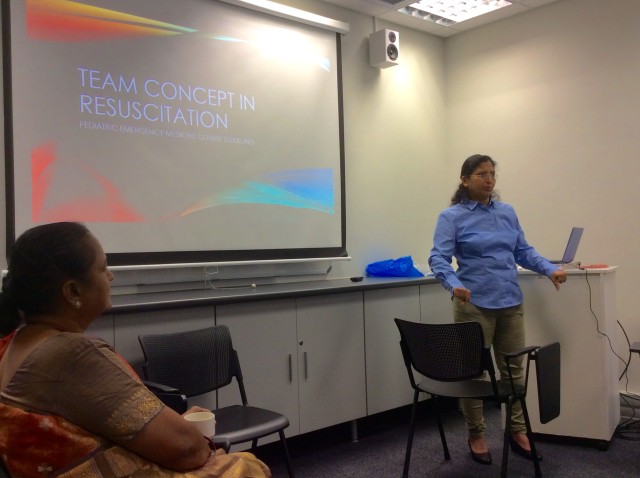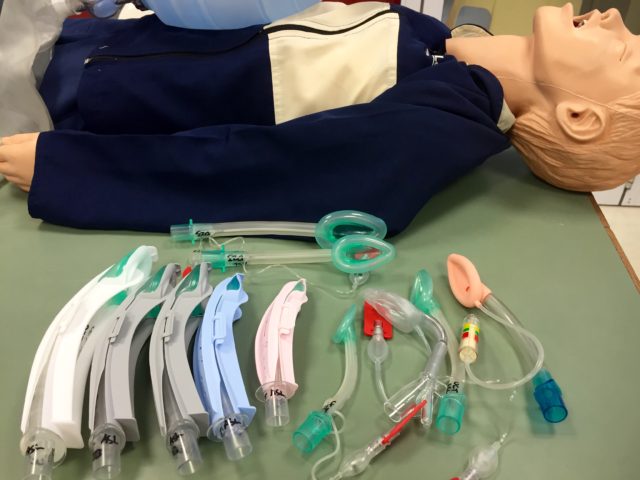A quick introduction and overview of the the TotalTrack Video Laryngeal Mask.
For more information, a list of publications and open access to our 2016 paper in SAJAA, you can see the OpenAirway TotalTrack page.
A quick introduction and overview of the the TotalTrack Video Laryngeal Mask.
For more information, a list of publications and open access to our 2016 paper in SAJAA, you can see the OpenAirway TotalTrack page.
A quick overview of the basic technique using the Fastrach ILMA.
As always, these videos are unscripted, so if you have suggestions or critique, please use the comments section!
This came up recently during an M&M discussion of a very challenging spinal surgery/airway case. Here’s a quick overview of the technique:
Critique? These videos are all unscripted, so please comment so that we can improve them over time!
Yip, another whirlwid tour, this time of the situations and considerations that may lead to intubating through a supraglottic airway. Each method will be expanded upon in later videos.
These videos are made off-the-cuff and can certainly be improved, so if you have suggestions, please put them in the comments!
A whirlwind tour through selection, indications, precautions, sizing and troubleshooting. For an overview of the types and classifications, see this post.
These videos are all unscripted, so if you have suggestions for improvement, please leave a comment below!
A brief (7 min) overview of the some of the types, classification and classes of SGAs, as part of some preparatory material for SMACCdub Airway Workshop participants.
For the next video on using SGAs, see this post.
These videos are all unscripted, so if you have suggestions for improvement, please leave a comment below!
In response to a great Twitter discussion with PHARM‘s @ketaminh:
See Minh le Cong’s PHARM blog post, video and podcast here. Please note that using a BVM is not the advised technique of oxygenation, but is used here because we don’t have an oxygen source in the skills lab.
Lots of ensuing discussion of the ideal angle of puncture of the cricothyroid membrane. 90 degrees (perpendicular to skin) has least risk of puncturing posterior wall of the trachea, but greatest risk of cannula kinking. I advocate around 60 degrees for puncture and then decreasing angle to advance cannula:

Here’s the poster by Kingma, Hofmeyr, Zeng, Cooramasamy and Brainard that has generated a fair amount of interest (>10k impressions on Twitter). Full analysis hopefully coming soon to a journal near you. Bottom line? In a difficult airway, you’d best be using a bougie or stylet, no matter who you are. As far as bougies go, preloading rather than railroading is faster and seems better. Click on the image for a full-resolution PDF (2Mb).
Want to talk about this? Comment below or ping @surferkirst @rosshofmeyr @TheSharpEndCrew on Twitter!
A video example of performing a straightforward intubation using the AirTraq optical laryngoscope, here coupled with the WiFi-enabled camera unit to allow image capture. Note the optimal positioning (“Rule of 3”):
This intubation is using a reinforced (“armored”) endotracheal tube, which is sometimes more difficult than a standard ETT, as it is a little floppier. The AirTraq makes it simple in this instance. The reinforced ETT was used to facilitate patient positioning for a neurosurgical case.

The first African presentation of the PEMC (Pediatric Emergency Medicine Course) is being run as one of the pre-conference workshops for ICEM 2016 at Red Cross War Memorial Children’s Hospital today. OpenAirway is present, assisting with the airway stations. Course instructors have given their blessing to host some of the supplementary material online for the #FOAM community, so we have created a PEMC resources page here! More content will be added as it becomes available.
